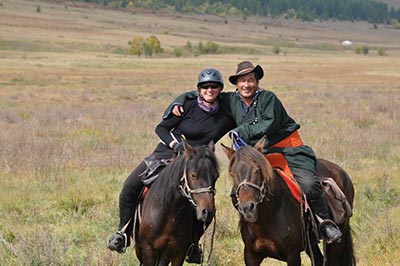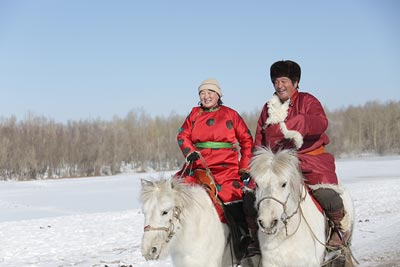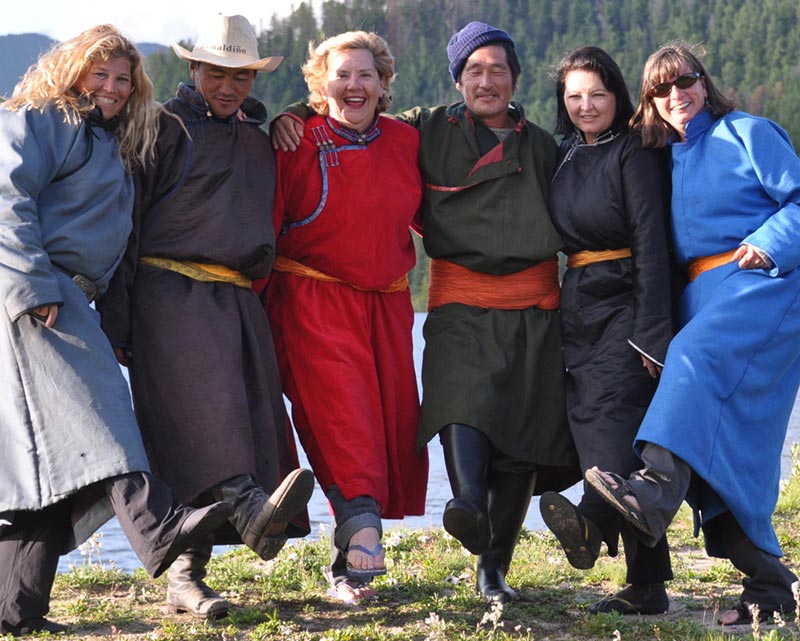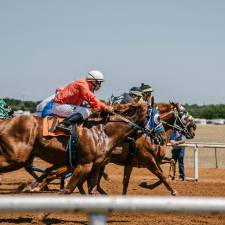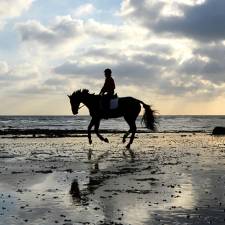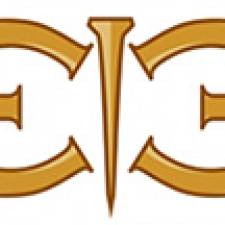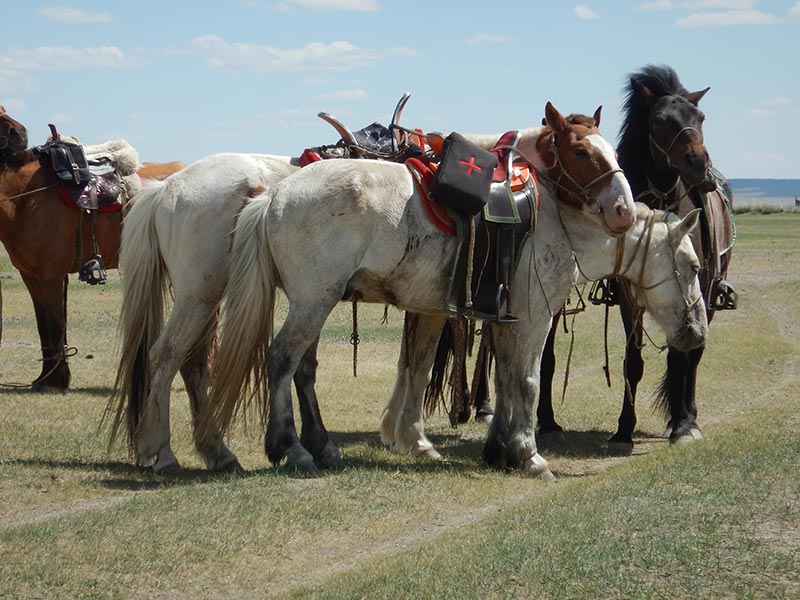
By Jenna Arnett
The Gobi Gallop is the longest annual charity horse ride in the world. As Jenna Arnett explains, you think you’re ‘ride fit’ until you tackle 700 kilometres on horseback in twelve days.
I didn’t start to panic until the Chinese Airways flight took off from Sydney. I was lucky to have a good seat with space, so my adrenaline-fuelled panic attack went fairly unnoticed. I had met up with the two other Australians — Kylie Gracey from Darwin and Anita McNamara from Hughenden, Queensland — earlier at the airport. I felt as though they were my spirit sisters; there is a certain sort of kinship that forms automatically between those about to undertake an adventure such as ours.
My fascination with the Mongolian horses began in my early twenties. I was riding for an endurance stable in southeast Queensland with a large number of international workers. The Mongolia horses’ endurance, stamina and the ancient culture of the nomadic herders that shepherd them is famous across the world and I had been looking for the opportunity to experience this for myself.
The Gobi Gallop is the longest annual charity horse ride in the world, covering more than 700 kilometres across the Mongolian steppe and Gobi Desert. Run by the Veloo Foundation, in conjunction with Horse Trek Mongolia, the Gobi Gallop raises money and awareness for the children of the Peak Sanctuary.
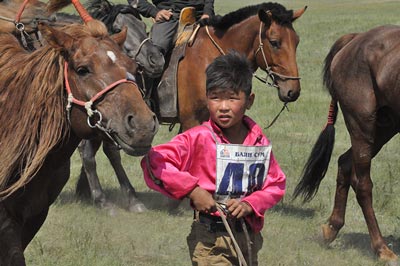
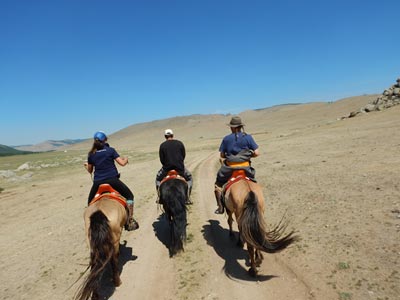
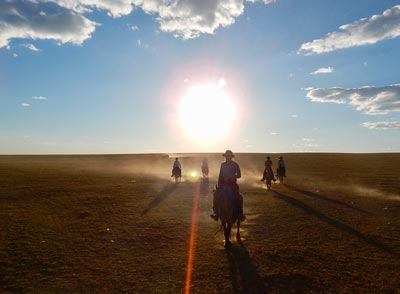
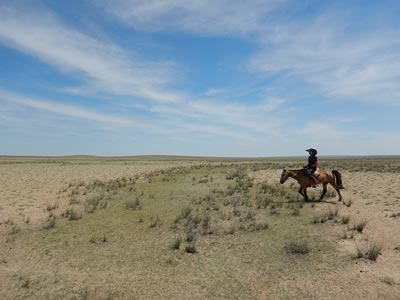
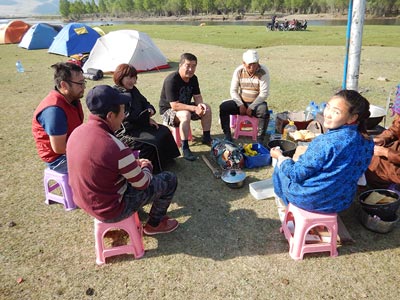
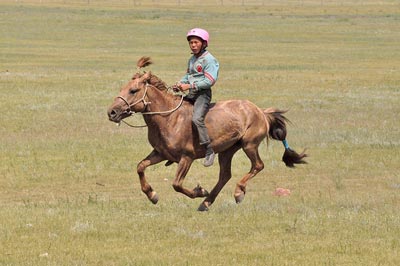
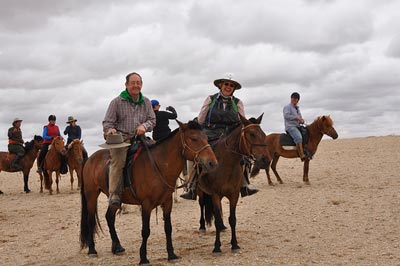
FIRST IMPRESSIONS
Our first rider meet and greet was held at The Grand Khan Irish pub, a westerner-style establishment based in the heart of Mongolia’s capital, Ulaanbaatar. There were eight of us in total: fellow Australians Kylie Gracey and Anita McNamara, New Zealanders Connie Beatson and Deborah Wheadon, and Americans Ryan Kertanis, Oliva Clarke and Bree Von Bradsky. Bree is a world-class documentary filmmaker, and captured much of the journey.
On the morning of the forth of June, we visited the Children of the Peak Sanctuary; this was what the trip was truly about. A compound built by the Veloo Foundation and operated in conjunction with the Mongolian Government, the sanctuary is based in the heart of the ger district (a ger is a traditional Mongolian tent) bordering the garbage dump in Ulaanbaatar. The Peak Sanctuary provides learning, meals, clothing, shelter and cultural education for children aged two to five who would otherwise be scrounging the dump for food or fuel for fires. The children we saw were healthy, happy and energetic. We had the chance to sit in on their playtime and listen to songs they sang for us. We were also shown through the Fran London Sowing Centre, another initiative of the Veloo Foundation to assist Mongolian women to gain employment and life skills.
.THE RIDE
Travelling to our base camp was like trundling up the tracks at the beginning of an amusement ride; anticipation and nerves walked hand in hand. After the group went through a safety brief, we were saddled and on our introductory ride.
Ancestors of the Mongolian horse are rumoured to have been around since roughly 2800BC. One of the world’s only endemic breeds of horse, Przewalski's horse is currently considered endangered. Recent conservation efforts have seen the species reintroduced to its native habitat following near- extinction in wild during the 1960s. The domesticated horse used by the Mongolians still retains characteristics of this breed. They are happy to go and happy to run, but you must pay heed to their wilder temperament and herd instincts. They spook at garbage and anything that flaps on their backs (Kylie Gracey experienced the third fall of the ride when her trusty steed un-expectedly shied at some rubbish). You don’t grab your phone from your pocket or a drink from you saddlebag. Averaging in size to between 13 and 14 hands, their gait is not always the smoothest. The traditional Mongolian saddle and style of riding has been adapted to these horses’ gaits over centuries.
We as riders conquered the distance in mostly a Mongolia/Western hybrid saddle of sorts. There is a traditional Mongolian saddle made especially for the ride each year; everybody must ride in “The Mongolia Comfort Saddle” for 20 kilometres and it was a great source of extra entertainment. I was in it for only three minutes when my trusty steed hit a Marmot hole and rather ungracefully ejected me straight back out of it through the dust. This saddle is auctioned off at the Gala dinner at the end of the ride to raise funds for the Peak Sanctuary.
The first day we took off from base camp we rode 50 kilometres, the furthest any previous rides had completed on day one. We travelled through high country, reaching an elevation of 1703 metres above sea level. The support crew for the ride was truly amazing; camp was already set up when we arrived. We had dinner, a beer to celebrate and shots of vodka to toast our successful first day and the eleven days ahead. That night in my tent, I started to feel a bit funny, a bit sweaty. My mouth was watering. The next thing I knew, I was revisited by everything I had consumed over the last twelve hours. I quickly bonded with American Ryan Kertanis, as he was just as sick as I was. Doctor Sukh was on hand to administer IV drips, anti-nausea, anti-viral and anti-biotic medicine. Miraculously, he got us back on track to ride.
This virus blessed each one of the riders over the next six days. When travelling to another country, the last thing you want is to get sick. If it were not for the gold class service handed down by the support crew of the Gobi Gallop, headed by Sarantuya (Saraa), I’m sure no one would have completed the ride!
Over the next few days, we witnessed some truly breathtaking landscapes. We spent the whole of day five and part of day six travelling across a small section of the Gobi Desert, with nothing to see but the horizon. There were some moments when we emerged from the steppe into forested mountains or undulating valleys where there were sprawling rivers and marshlands. A galloping herd of wild horses was a daily sight, and for a self-confessed horse addict this was the best bit!
Each day of this adventure we woke up in a different part of Mongolia; each day our group experienced snap shots of local culture. With not a fence to be seen, we came across nomadic herders tending to the sheep, cattle, horses, goats and camels in the tradition used for thousands of years. It was commonplace to look to the left and see a herder galloping across the hillside to pull a wayward lamb back into the herd upon which they relied on to survive this harsh landscape.
We were lucky enough on day six to witness a local “Naadam” race in action. Children from five to twelve years old, sometimes with a saddle on, sometimes bareback, ride racehorses in varied long- distance races to qualify for the National Naadam. This is the foundation to the Mongolia way of riding and the balance and endurance that is evident if you ever see them on horseback. The Naadam is the biggest horse race in the county — their Melbourne Cup — and it’s an annual celebration for Mongolia.
RIDE FIT
I did fancy myself as ‘ride fit’ before I left Australia. I was exercising not only my own 16.2 hand gelding, George, but anybody else’s I could get my hands on daily. I think back now and giggle a little bit. I was not ride fit. I was not even fit. Combine a 13 hand horse, high altitude and an average of 70 kilometres of riding per day, and what you’ll get by the end is ride fit.
My knees were the first to go on day one; this was closely followed by the balls of my feet on day two. Bone-weary tiredness then kicked in, preventing me from doing much more than ride, eat, sleep and repeat. Just as quickly as the aches and pains developed, they disappeared. Come day seven, I felt like I could do this distance and more; I was loving it. Bring on the gallop stretches that went for kilometres. It was the general consensus amongst all the riders that apart from the desperate need for a warm shower, we all could have ridden double the distance.
Our guides — Batsumber, Lkhagvasuren and Bayarzul, led by Batsaikhan — were the backbone of the ride. They led our group of overly excited, sometimes sore and worse for wear foreigners through the country with just memory and experience to guide them. It is a cascade of emotional and physical trials that one experiences throughout twelve days of riding. We were all there for the same purpose: to finish what is the longest annual charity horse ride in the world, while raising funds for a very worthy cause. This purpose drove us to continue though sickness and health until the end. We talked, sang songs, grumbled and cheered our way through every day.
THE EXPERIENCE OF A LIFETIME
On May 31st 2017 I left my hometown of Mount Isa in northwest Queensland and undertook the most epic adventure an Aussie girl could imagine. Not only did the Gobi Gallop rise to my expectations, it smashed them out of the ballpark. I am a better person for meeting the riders, the crew, the animals and the absolute hero that is Julie Veloo. I learnt that there really is a song for everything, chafe is to be embraced not feared — and 705.5 kilometres across the Mongolian steppe is a life changing experience.
To learn more about the Veloo Foundation, to donate, or to participate in the 2018 ride, please visit www.veloofoundation.com
Visit the Gobi Gallop Web page and the Facebook page
This article published here with permission from www.veloofoundation.com.
